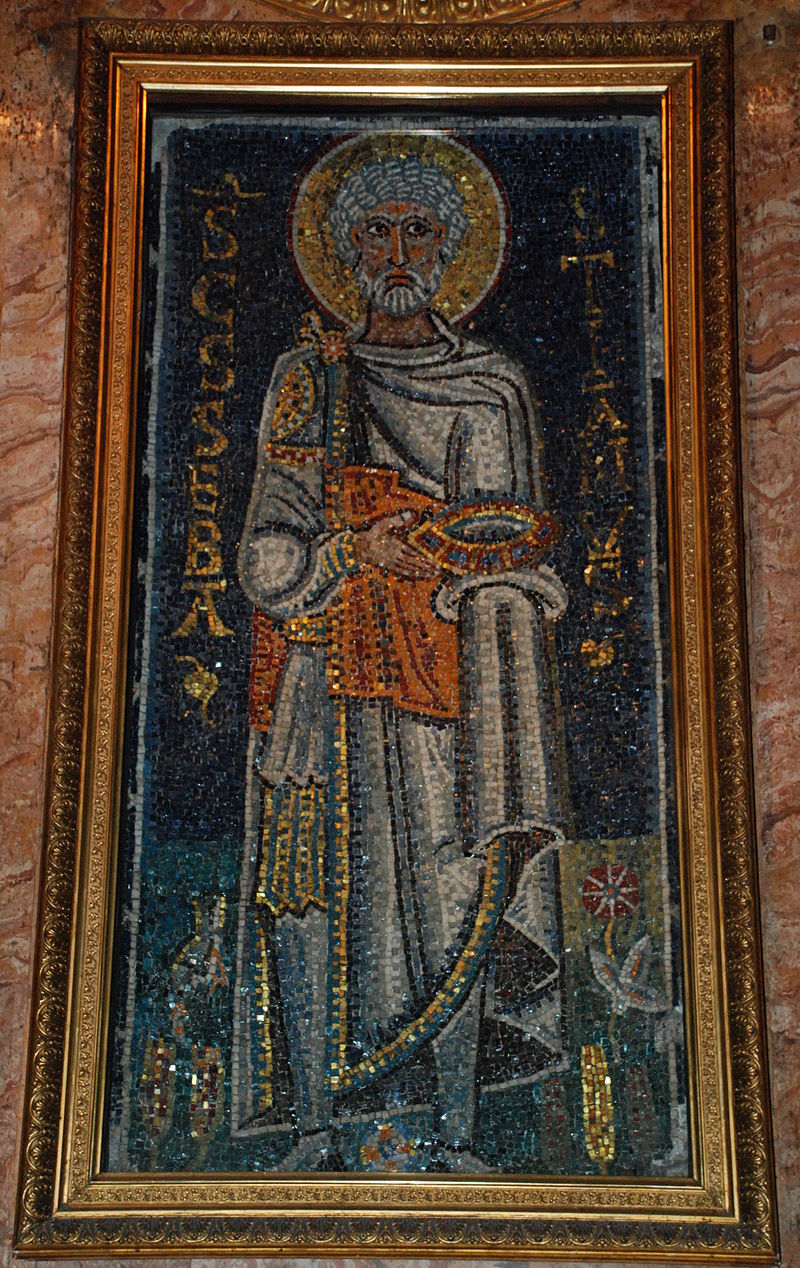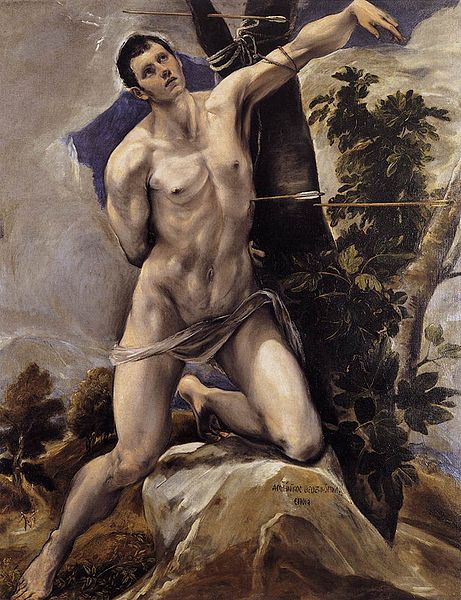January 20th is recognized as the Feast Day of Saint Sebastian. According to Robert Kiely, the most well-known images of the Saint, which depict him almost nude, bound, and pierced with arrows developed first in the thirteen-and-fourteen centuries. This marked a shift from earlier portrayals of the Saint as a patriarch.
A Roman soldier, Sebastian served Emperor Diocletian and, according to The Golden Legend, willingly took on roles that allowed him to support devout Christians. His martyrdom resulted not only from his involvement in the destruction of idols but also because of his responses to the Emperor’s questions about his faith. Sebastian explained his beliefs and noted the “folly” of praying to idols. To punish this betrayal, Sebastian was shot with arrows and left for dead. The woman who was to collect his body saw that he lived and helped to nurse him back to health. Rather than flee with his life, Sebastian faced the Emperor a second time. This encounter led him to be jailed, clubbed to death, and his body thrown in the sewer. After his death, Sebastian appeared to Saint Lucy and shared with her the location of his body. His corpse was recovered, washed, and finally buried in the catacombs.
At the end of the sixth-century, Pope Gregory elevated the Saint’s significance and visibility when he named Sebastian the third patron of Rome alongside Saints Peter and Paul.
As patron saint of soldiers and those with any illness, over the centuries Saint Sebastian has come to embody the isolation felt by those suffering as well as to symbolize hope for healing and physical resilience. (Kiely, 125-127)
References: Kiely, Robert. Blessed and Beautiful: Picturing the Saints. Yale University Press, 2010; Compiled by Jacobus de Voragine. The Golden Legend. (1275, published 1470). The Temple Classics. Edited by F.S. ELLIS (1900 Reprinted 1922, 1931).
Ludovico Carracci, Saint Sebastian thrown in the Cloaca Maxima, (1612), oil on canvas. Los Angeles: Getty Center. (Photo credit: Wikimedia Commons)
Saint Sebastian. Rome: San Pietro in Vincoli. (7thC), mosaic. (Photo credit: Wikimedia Commons)
El Greco, The Martyrdom of Saint Sebastian (1577-1578). Palencia: Cathedral. (Photo credit: Wikimedia Commons)
Further reading: Jill Burke. The Renaissance Nude. New Haven CT: Yale University Press, 2018; Patricia Lee Rubin. Seen from Behind: Perspectives on the Male Body and Renaissance Art. New Haven CT: Yale University Press, 2018.



